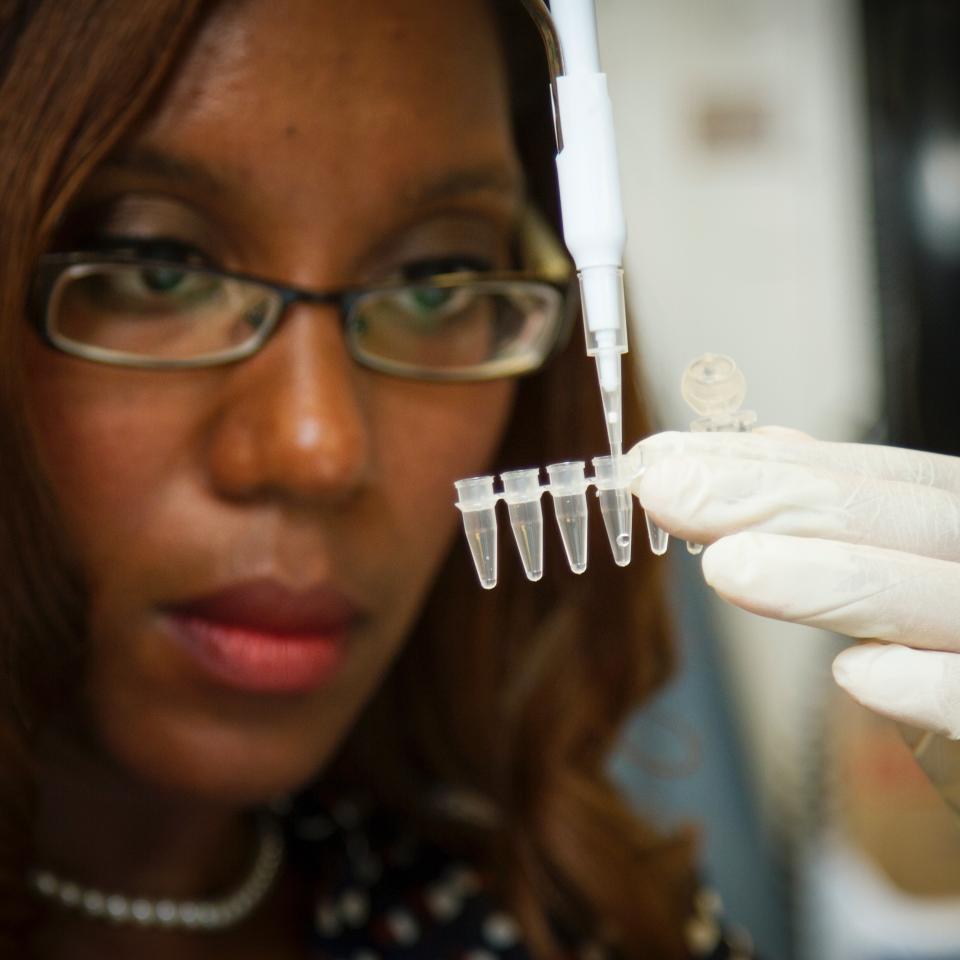
Developing new technology to diagnose and treat rare diseases
New technology developed by researchers at Swansea University has improved the diagnosis and treatment of rare diseases, opening up new approaches to patient management for health care professionals worldwide.
Oxysterols are a by-product formed when the body metabolises (processes) cholesterol. They are important in medicine because the number of oxysterols present in the body, and how they behave, can be a sign of underlying disease caused by inborn errors of metabolism (IEM).
IEM can cause a wide range of rare diseases. These diseases can be mild or fatal. However, while most IEM are incurable, they are very often treatable. The key to successful treatment is early detection and accurate diagnosis based on a precise biochemical analysis.
Because IEM are rare, many do not yet have a specific therapy. Therefore, a clear analysis of the oxysterols can help clinicians to test potential treatments and enable patients and families to access the right support.
However, analysis of oxysterols has historically proved challenging.
Developing new technology
The Swansea University team has been researching this area since 2007. They developed a straightforward, specific and highly sensitive technology called EADSA to investigate the oxysterol content of human plasma.
They went on to use EADSA to diagnose (with a 100% success rate) Smith-Lemli-Opitz syndrome (SLOS) - a rare disease caused by IEM - using amniotic fluid.
The research team further proved the efficacy of EADSA when they used it to analyse the plasma of a young patient and confirm they had a very rare disease which presents with liver disease in infants and can lead to a type of motor neuron disease in adults. The team also used the technology to monitor the patient’s response to treatment.
The research team continued to develop EADSA for use in the diagnosis and treatment of other rare diseases caused by IEM. They also researched motor neuron disorders using patients’ cerebrospinal fluid and plasma.
Diagnosis and treatment of rare diseases
EADSA technology has provided health professionals worldwide with new ways to care for their patients. It has been used across Europe, Asia and the US to help diagnose and treat 70 people with a range of rare diseases caused by IEM. For example:
Patient one
Patient one, from Greece, was diagnosed with SPG5, a rare condition with unknown prevalence. The research team used EADSA to track their response to treatment for 18 months. A clinician confirmed that, “The procedure performed helped considerably in the treatment of the patient and their biochemical profile in response to treatment.”
Patient two
Patient two, from Turkey, was diagnosed with ACOX2 deficiency, an exceptionally rare disease with less than five cases reported worldwide. The EADSA technology helped to diagnose the disease and monitor the patient’s response to treatment. One of the clinical team said, “Professor Griffiths and his laboratory have greatly contributed to both the diagnosis and follow-up of the new disease.”
Patient three
Patient three was a child diagnosed with Lysosomal Acid Lipase Deficiency (LALD), a rare inherited range of disorders about which little is known. Working with the Genomic Medicines team at St Mary’s Hospital in Manchester, the research team confirmed the child’s disease and monitored their response to treatment. One of the clinicians treating the child said, “This [EADSA] is proving a critical part in assessing the benefits of treatment.”
The team’s research into motor neuron disorders found that specific cholesterol-derived acids affect whether motor neurons survive or die and so discovered potential treatments for this devastating group of diseases.
Research team
Professor William Griffiths and Professor Yuqin Wang – Swansea University
